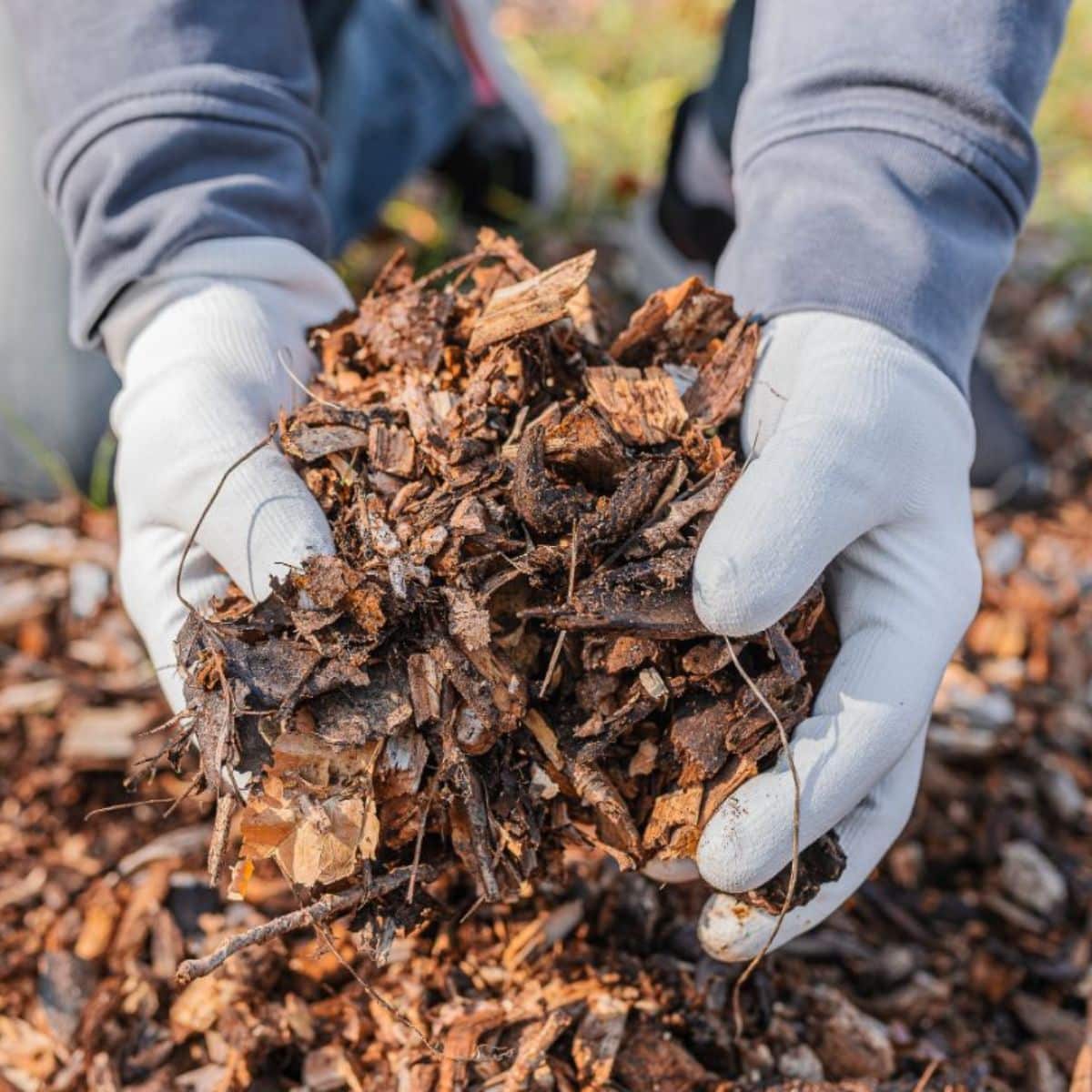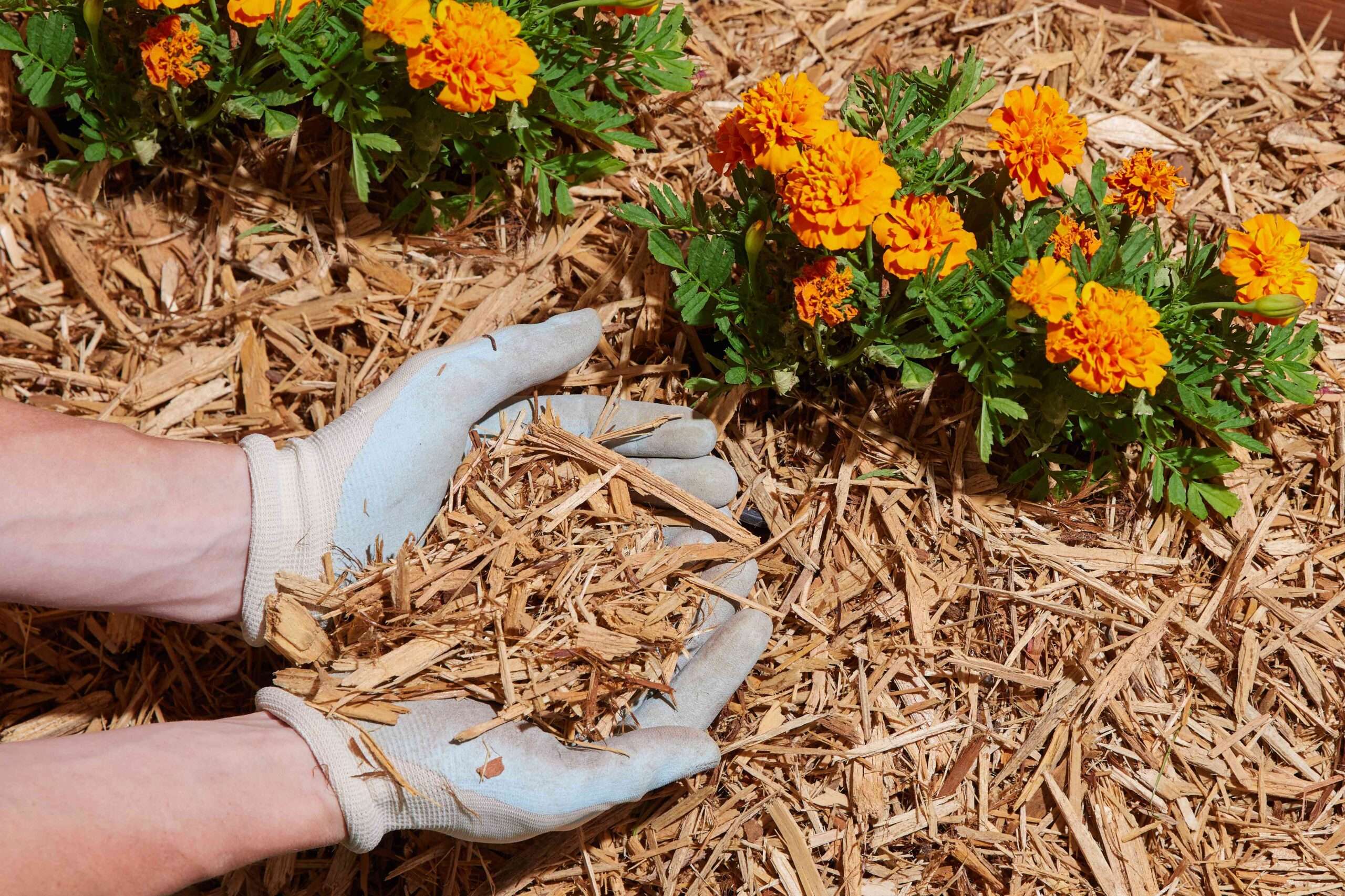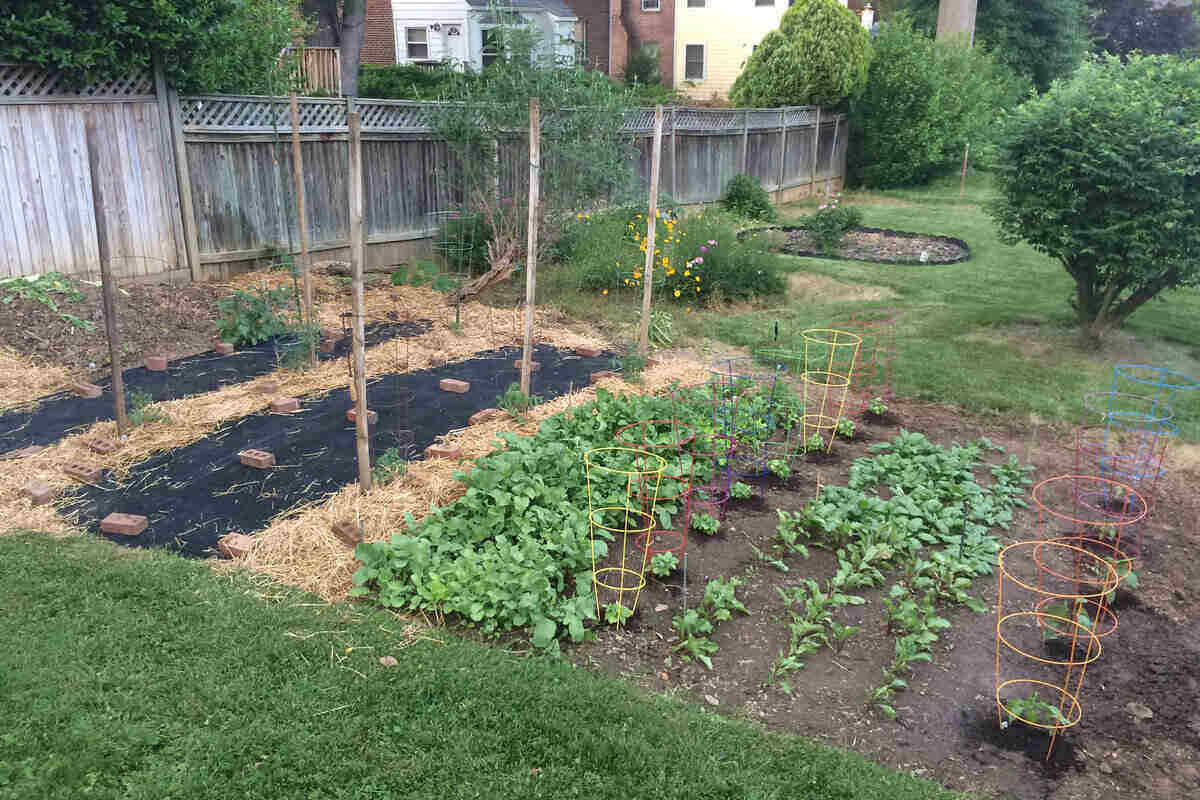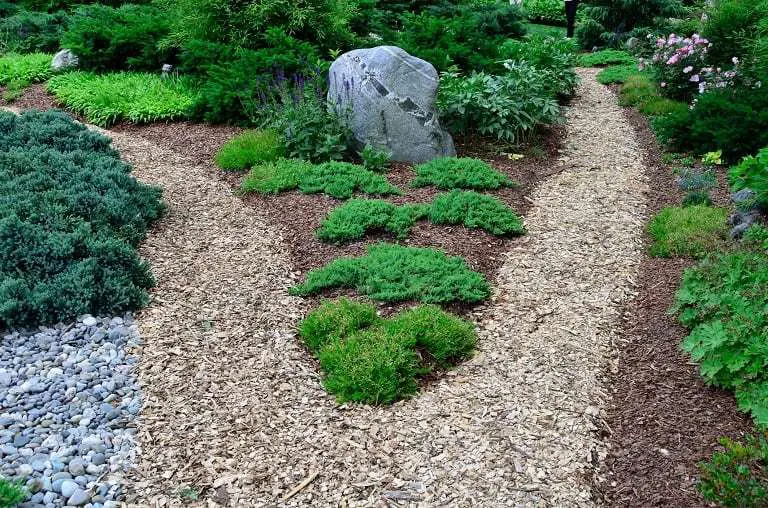If you’re dealing with wet areas in your garden, especially for permaculture, finding the right mulch can be a challenge. Most plants require relatively dry roots to survive, so simply mulching the problem away won’t work. However, there are ways to improve drainage in the soil and create a healthier environment for your plants. Organic mulches like grass clippings, leaves, and wood have excellent water absorption capabilities, acting as sponges to retain excess moisture and gradually release it back into the soil. To address wet areas, consider using plastic mulch or well-draining options like wood chips and decorative pebbles. By digging or tilling the soil and incorporating these mulches, you can create better drainage and promote successful plant growth in wet areas of your garden.

Best Mulch For Wet Areas
If you have wet areas in your garden, you know how challenging it can be to find the right mulch that will help improve drainage and prevent waterlogging. But fear not, we have compiled a list of the best mulch options for wet areas to make your gardening experience a little easier.
Gravel or crushed stone mulch
One of the best mulch options for wet areas is gravel or crushed stone. These materials allow water to flow freely through the mulch layer, preventing the accumulation of excess moisture around plants’ roots. Gravel or crushed stone mulch also creates a permeable surface that allows water to drain quickly, reducing the risk of waterlogging. Additionally, gravel or crushed stone mulch is durable and long-lasting, making it a practical choice for wet areas.
To properly apply gravel or crushed stone mulch, it is crucial to ensure that the layer is not too thick, allowing water to penetrate the soil properly. This will help maintain the balance of soil moisture and prevent water from pooling around the plants’ roots. Regular maintenance, such as redistributing the mulch layer occasionally, will also help ensure its effectiveness in wet areas.
Cypress mulch
Another excellent option for mulching wet areas is cypress mulch. Cypress mulch is known for its water-resistant properties, making it suitable for maintaining soil moisture balance while allowing excess water to drain away effectively. It also promotes good airflow, which is essential for preventing water accumulation and root rot.
When using cypress mulch in wet areas, it is essential to apply a layer that is not too thick. This will allow for proper water penetration and drainage. Additionally, regularly monitoring the moisture levels in the soil and adjusting the mulch layer accordingly will help ensure its effectiveness.
Pine straw mulch
Pine straw mulch is also a suitable option for mulching wet areas. It creates a loose, airy layer that allows for better water drainage, preventing water from pooling around plants’ roots. Pine straw mulch also helps maintain soil temperature and prevent erosion in wet areas.
To effectively use pine straw mulch in wet areas, apply a layer that is not too thick. This will allow water to percolate through easily and prevent waterlogging. Regularly monitoring the moisture levels in the soil and adjusting the mulch layer when necessary will also help ensure optimal results.
Wood Chips
Wood chips are another popular mulch choice for wet areas due to their ability to drain relatively fast while retaining some moisture. When using wood chips in wet areas, it is essential to prepare the soil properly before mulching. This can be done by tilling or digging up the soil to improve drainage.
To apply wood chips effectively in wet areas, place a 2-6 inch layer around the plants, ensuring that the mulch doesn’t touch the plants‘ stems. Alternatively, you can plant the plants directly in the wood chip mulch, allowing the water to drain through the mulch layer. This method can be particularly useful if you have a bug problem in your mulch, as it creates a barrier between the insects and the plants.

Decorative Pebbles
Decorative pebbles are an excellent choice for mulching wet areas because they do not retain water. The water can easily pass through the layer of pebbles, preventing waterlogging and promoting better drainage. However, it is important to note that decorative pebbles are not organic mulch.
To effectively use decorative pebbles in wet areas, till or dig up the wet area and fill it with a deep layer of pebbles. The deeper the layer of pebbles, the lower the water will pool. Some plants can be grown directly in the pebbles, while others may require a mixture of pebbles and compost for optimal growth. It is also important to choose plants with shallow roots, as they will be better suited for wet areas with improved drainage.

Plastic Mulch
If the wet areas in your garden are primarily caused by heavy rain, plastic mulch can be a useful solution. Unlike organic mulches, plastic mulch doesn’t allow water to penetrate through it, effectively protecting the soil. Additionally, the mulch can help to dry out the soil during hot summer days.
To properly install plastic mulch in wet areas, make holes in the fabric to accommodate your plants. It is also important to place the plastic mulch at a slight angle to prevent water from pooling on the surface. If your soil is heavily eroded, it may be beneficial to place an organic mulch layer below the plastic mulch, such as grass clippings. This will help feed your plants as the organic material decomposes.

Key Takeaways
When it comes to mulching wet areas, gravel or crushed stone, cypress mulch, and pine straw mulch are some of the best options available. These mulches promote better water drainage, prevent waterlogging, and help maintain soil moisture balance.
Wood chips and decorative pebbles are also effective mulch choices for wet areas. Wood chips drain relatively fast, while decorative pebbles allow water to pass through easily. Proper application and maintenance of these mulches are key to their effectiveness in wet areas.
Plastic mulch can be a practical solution for wet areas caused by heavy rain. It protects the soil from excessive moisture and helps dry it out during hot summer days. Proper installation and an understanding of the specific needs of your plants are crucial for using plastic mulch effectively in wet areas.

FAQ
Can you put mulch on top of wet soil?
It is generally not recommended to apply mulch on top of wet soil, as it can trap moisture and lead to excessive dampness. This can promote fungal growth and root rot. It is best to allow the soil to dry out before applying mulch.
What is the best mulch for retaining moisture?
Organic mulches such as wood chips, straw, or bark mulch are excellent for retaining moisture in the soil. These mulches create a protective layer that helps prevent evaporation and keeps the soil consistently moist.
What mulch doesn’t hold moisture?
Inorganic mulches such as gravel or rocks do not hold moisture as effectively as organic mulches. These mulches allow water to pass through more easily, which can be beneficial in areas where moisture retention is not a priority.
What is the best fill for wet areas?
For wet areas, using materials like coarse sand or gravel can help improve drainage and prevent waterlogging. These materials allow water to drain more effectively and reduce the risk of water accumulation in the soil.




